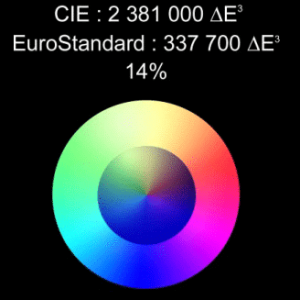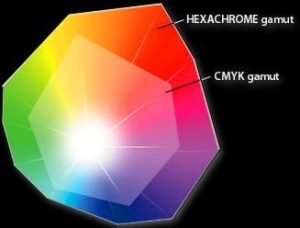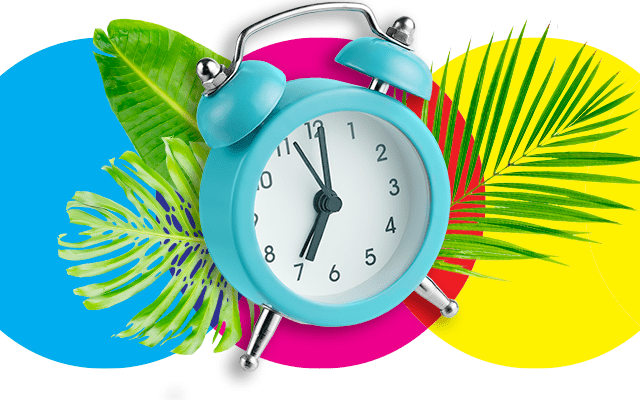In packaging and labelling, the color in your prints is very important. Colors used in addition to the message and values conveyed on your packaging can influence the purchase. In a previous post, we talked about the importance of the visual impact your packaging has on buyers, and how packaging and labels can contribute to the success of your products.
Also, in our digital print post, we explained the difference between RGB and CMYK colors and how to properly set up your printing systems.
In this post, we’ll call on our expertise in printed identification to explain what the Hexachromy printing technique consists of.
What is hexachrome™?
This technique was invented in 1994 by Pantone, a color system and color technology provider. Hexachromy uses 6 color points. These colors are the basic colors of the four-color process (cyan, magenta, yellow and black) to which are added orange, blue and / or green.
This process allows the optimization of printouts, using better colour reproduction thanks to its 6 colors.
With hexachromy, the range obtained when printing is larger compared to quadrichomy because of the greater number of color and shade combinations. Indeed, standard ink ranges on coated papers represent 337,700 colors and cover 14% of the visual color range.
With hexachromy, the color range obtained is widened because the number of colors is 495 150 of which represents 46% more.
What are the benefits of hexachromy?
As explained above, the main advantage of this method is to cover a larger print range. This solution also makes for very high-quality printing. The colors are vibrant. Images printed in hexachromy are very close to their originals.
Generally, in the four-color process, the colors that are less easy to reproduce are greens and oranges and violets. With the hexachrome ™ technique, it is much easier.
The example often used to illustrate the print quality of hexachrome™ is that of the flower, because this technique makes it possible to highlight the very tight gradation of the many nuances of color contained in flower petals.
In the field of printing, this technique is available on some inkjet printers, which can produce images close to photography.
If, for example, you were to use photos in your packaging, this process could be well worth your while to investigate.
However, keep in mind that hexachromy is a less used process than four-color because it’s a more expensive technology. Six machine runs (one for each colour) are required for high-quality prints.
Multiple media can be used:
- Roll-up, kakemono
- Newspaper
- Basic paper and cardboard
Custom printing solutions
Would you like to know if this process right for you? Contact our experts to discuss! Please also check out the many printing solutions we offer!









